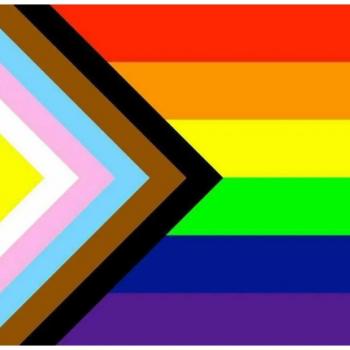“The only part of one that burns in hell is the part that won’t let go of life.” – Meister Eckhart (Medieval Christian mystic, gracias a Gary, emphasis mine)
It seems that the notion of hell is popping up in my life a bit too much lately to be merely dismissed. Not long ago I escaped the “Halls from Hell” in London. I miss my friends there but the environment in general was not healthy.
Now I find myself in what may be a new “hell” – or at least in very close proximity to one here in DC.
I believe I’m creating my own “hell” by falling into the illusion that I am trapped or stuck here. – Kelly (my fiancée)
 Detail from the Bhavacakra – the Wheel of Life – showing the hell and hungry-ghost realms.
Detail from the Bhavacakra – the Wheel of Life – showing the hell and hungry-ghost realms.
When one is caught up in those emotions, they create a world of their own. While on the ultimate level this is an illusion, to the person experiencing it, it is as real and true as as any truth can be.
What gives rise to such horrific realities? On one level we may point to outside circumstances, vowing that once these change everything will be ok. Yet for the Buddhist, and one suspects the Christian, the Hindu, the Muslim, and others, this answer fails. On the radical level it fails radically. By this I mean that all religious traditions at some point call for a complete abandonment of worldly concerns, demanding inner focus, and promising immeasurable reward for this transformation.
However, that is the radical path, to be tread by but few in any tradition. The other extreme is that of the hedonist/materialist, for whom outside circumstances are all that matters. For the rest of us, the vast majority, there is the difficult job of balancing an inner path with the vicissitudes of the world and our responsibilities.
The Wheel of Life tells us in no uncertain terms the root causes of our hells, our heavens, and other realities. The innermost ring depicts a cock, a snake, and a pig each biting the tail of the next to represent greed, hatred, and delusion. Oftentimes delusion, the pig, is represented with both of the other animals’ tails in its mouth, indicating that delusion or ignorance is the deepest of our poisonous mental states. The next ring gives you what I think of as the one area in Buddhism that is clearly black and white: you are either moving upward in your spiritual work or you are roped by the hell-denizens and pulled down.
On the other hand are our devotions or duties to those around us. In the Sigalovada Sutta, described as ‘The Layperson’s Code of Discipline’ we find a list of these:
- East = Parents
- South = One’s teacher
- West = Husband or Wife
- North = Clansman (or friends)
- Nadir = Servants and Employees (presumably students as well)
- Zenith = Ascetics and Brahmins
East, as the sun rises, is our beginnings, our parents without whom we would not exist. South (I speculate) either likewise followed the sun (India is North of the equator after all) or could be tied to India’s status as the ‘Southern Continent’ in early mythology/geography. West is the future, the man or woman with whom the sun will set on your life. North (again speculating) closes the circle, indicating the incompleteness of life without ties to friends and kin. Downward we those who are spiritually or otherwise below us on the path. And Upward we turn to our own aspirations, our own best selves as embodied in those who have undertaken the arduous path to awakening.
My own life has been filled with blessings in all directions. Perhaps the practice of reviewing them should be more regular in my life: counting blessings, generating gratitude, warming my heart.
In Buddhism it is ourselves, not those around us, who ultimately determine our place in the Wheel of Life. As my fiancée speaks of hell rising in her own life, I want so badly to relieve it, to pull her out, to comfort her. So much so that it affects me; a hell of my own begins to sprout. Yet, like her hell, mine is neither caused nor removable by her. It is a factor of my own greed, hatred, and delusion and my own lack of spiritual development.
In this way we are mirrors into one another. The more we love the more deeply we see. The more deeply we see the more difficult it often is to accept what is there.
One slips into a hell of one’s own by forgetting the process-nature of reality and giving the fearful images and emotions of the present more power than they deserve. There is a natural human tendency toward clinging (upadana), seeking certainty in a world where none exists. A powerful lesson for us all is knowing when to let go.











